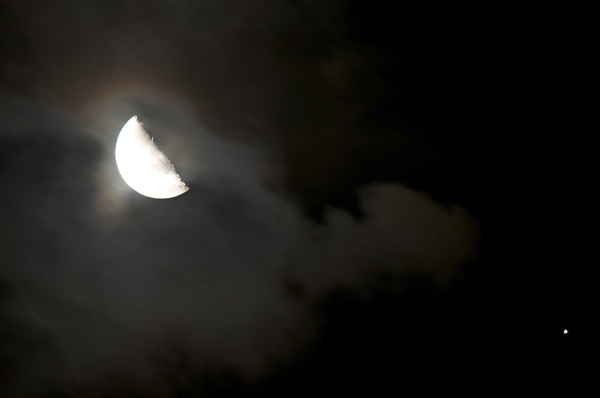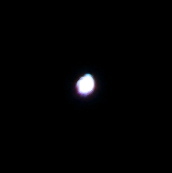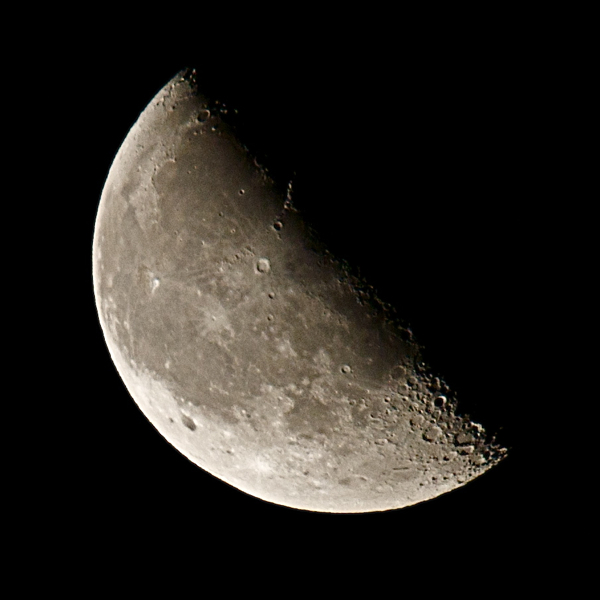
Some clouds pass in front of the moon, with Jupiter, seen off to the right, in the clear.
The hobby I seem to be interested in right now, photography, has grown out of my job as a journalist. I started using digital SLRs during a class at American University that taught handling skills for such "high-tech" equipment as high-speed still cameras, high-definition video cameras and high-fidelity sound recorders.
There are many times in my job that I see an image in the newspaper or on the photo wire that simply inspires me, even excites me. That happened this week when I saw amateur astrophotographer Thierry Legault's image of shuttle Atlantis and the Hubble Space Telescope in what's called "solar transit." In other words, they were silhouetted against the sun in a first-ever image captured from the ground. Legault has asked people to respect his copyright on the photos, so I'll just include a link to his site, which contains high-resolution versions. Check them out.
Legault, a French engineer, photographed Atlantis on Tuesday, a day after I shot the spaceship as it launched from Kennedy Space Center. The telescopic images were captured in Daytona Beach, which makes me wonder if he watched the liftoff from the Space Coast.
Like I said, the images inspired me, but I can only dream of such brilliant captures. It takes both expensive camera and telescope equipment, not to mention astronomical knowledge, to achieve such a feet. Instead, I used my new camera to again shoot the moon, this time partially shrouded in clouds and getting cozy with Jupiter.
 The angle at which I have to point my camera to shoot the natural satellite is not steep just after moonrise. Later in the night or morning, it can get quite high in the sky. That's when a good tripod comes in handy.
The angle at which I have to point my camera to shoot the natural satellite is not steep just after moonrise. Later in the night or morning, it can get quite high in the sky. That's when a good tripod comes in handy.I tested my new Manfrotto Pro 055XPROB tripod early this morning by pointing it toward Polaris (left), the widely known star that happens to be quite high in the sky. I discovered that, when the lens is mounted in reverse, the tripod can be angled to almost 90 degrees (in accordance to the ground), allowing the lens to be pointed straight up. It was still stable, but the lens tended to zoom out without a touch, a phenomenon known as "lens creep" (sounds like a name I've been called while taking photos of little children). But hey, that's what gravity will do to you.
The resulting image of Polaris isn't much, of course. But I'll always have my dreams of something better.
Moons are half off today. Too see a high-resolution image, click on the above one.




2 comments:
I think the French dude had it backwards. 100km NORTH of KSC is Daytona Beach Shores, that beach he's parked on. (My favorite driving beach!)
Yeah, he posted photos of himself Monday at Kennedy Space Center (near the launch pad) and at Daytona Beach. He took photos of the transit at both places. But it doesn't appear he was actually south of the space center. However, that does answer my question of whether he had exclusive NASA access.
Post a Comment